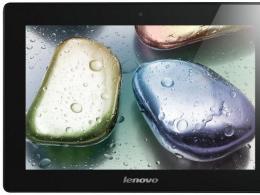Will pci 3.0 fit in 2.0. PCI-Express interface, its main characteristics and backward compatibility
- Hello! Please explain the difference in throughput between the interface PCI Express 3.0 x16 and PCI Express 2.0 x16. There are still on sale motherboards with PCI Express 2.0 x16 interface. I'm with I will lose vidyuhi performance if I install a new interface video cardPCI Express 3.0 to a computer with motherboard, where there is only a connectorPCIe 2.0? I think that I will lose, because the totalbaud rate PCI Express 2.0 has - 16 GB / s, and the totalPCI Express 3.0 data transfer rate is twice as fast - 32 GB/s.
- Hey! I have a computer with a powerful but not new processor Intel Core i7 2700K and a motherboard that has a PCI Express 2.0 slot. Tell me, if I buy a new PCI Express 3.0 interface video card, then this video card will work twice as slow as if I had a motherboard with a connector PCI Express 3.0? Does that mean I need to change my computer?
- Please answer this question. On my motherboard there are two connectors: PCI Express 3.0 and PCI Express 2.0, but in the connector PCI Express 3.0 new graphics card PCI Express 3.0 does not climb, the southbridge radiator interferes. If I install a video cardPCI-E 3.0 per slot PCI-E 2.0, will my video card perform worse than if it was installed in a PCI Express 3.0 slot?
- Hello, I want to buy a used motherboard from a friend for two thousand rubles. Three years ago, he bought it for 7,000 rubles, but I'm confused by the fact that it has a slot for an interface video card PCI-E 2.0, and I have a video cardPCI-E 3.0. Will my graphics card on this motherboard run at full capacity or not?
Hi friends! To date, on sale you can find motherboards with a slot for installing PCI Express 2.0 x16 video cards, and PCI Express 3.0x16. The same can be said about graphics adapters, there are video cards with an interface PCI-E 3.0, as well as PCI-E 2.0. If you look at the official specifications of the PCI Express 3.0 x16 and PCI Express 2.0 x16 interfaces, you will find out that the total data transfer rate of PCI Express 2.0 is- 16 GB / s, and PCI Express 3.0 is twice as large -32 GB/s. I will not delve into the wilds of the specifics of these interfaces and just tell you that there is such a big difference indata transfer rate is visible only in theory, but in practice it is very small.If you read articles on this topic on the Internet, thenyou will come to the conclusion that modern PCI Express 3.0 interface video cards operate at the same speed in PCI Express 3.0 x16 and PCI Express 2.0 x16 slots, and difference in throughputbetween PCI-E 3.0 x16 and PCI-E 2.0 x16 is only 1-2% loss in video card performance. That is, it doesn't matter in which slot you install the video card, in PCI-E 3.0 or PCI-E 2.0, everything will work the same way.
But unfortunately all these articles were written in 2013 and 2014 and at that time there were no games like Far Cry Primal, Battlefield 1 and other new products that appeared in 2016. Also released in 2016 family of NVIDIA 10-series GPUs, such as graphics cards GeForce GTX 1050 and GeForce GTX 1050 Ti and even GTX 1060. My experiments with new games and new video cards showed that the advantage of the PCI-E 3.0 interface overPCI-E 2.0 is no longer 1-2%, but on average 6-7%. What is interesting if the video card is lower class than GeForce GTX 1050 , then the percentage is less (2-3%) , and if vice versa, then more - 9-13%.
So, in my experiment, I used a video card GeForce GTX 1050 PCI-E 3.0 interface and socketed motherboard PCI Express 3.0 x16 and PCI Express 2.0 x16.
H graphics settings in games are always maximum.
- Game FAR CRY PRIMAL. Interface PCI-E 3.0 showed an advantage over PCI-E 2.0 as always higher by 4-5 frames, which is approximately 4 % %.
- Battlefield 1 game. The gap between PCI-E 3.0 and PCI-E 2.0 was 8-10 frames , which is about 9% as a percentage.
- Rise of the Tomb Raider. Advantage PCI-E 3.0 averages 9- 10 fps or 9%.
- Witcher. The advantage of PCI-E 3.0 was 3%.
- Grand Theft Auto V. The advantage of PCI-E 3.0 is 5 fps or 5%.
That is, there is still a difference in bandwidth between the PCI-E 3.0 x16 and PCI-E 2.0 x16 interfaces and is not in favor of PCI-E 2.0. So I wouldn't buy this moment motherboard with one PCI-E 2.0 slot.
A friend of mine bought a used motherboard for three thousand rubles. Yes, once it was heaped up and cost about ten thousand rubles, it has a lot of connectors SATA III and USB 3.0, also 8 slots for RAM, it supports RAID technology, etc., but it is built on an outdated chipset and a PCI Express 2.0 video card slot on it! In my opinion, I'd rather buy it. Why?
It may well happen that in a year or two the latest video cards will work only in the connector PCI Express 3.0 x16 , and on your motherboard there will be a morally obsolete and no longer used by manufacturers connector PCI Express 2.0 x16 . You buy a new video card, and it refuses to work in the old slot. Personally, I have already encountered many times that the video card PCI-E 3.0 did not run on the mat. connector board PCI-E 2.0, and Even updating the BIOS of the motherboard did not help.I also dealt with video cardsPCI-E 2.0 x16, which refused to work on older motherboards with an interface PCI-E 1.0 x16, although everywhere they write about backward compatibility.Cases when a PCI Express 3.0 x16 video card did not start on motherboards withPCI Express 1.0 x16, even more.
Well, do not forget about the appearance of the interface this year PCI Express 4.0. In this case, PCI Express 3.0 will be obsolete.
Introduction
Moore's law states that the number of transistors on a silicon chip that is profitable to produce doubles every couple of years. But don't think that processor speed is also doubling every couple of years. This is a common misconception, and users often expect exponential scaling of PC performance.
However, as you probably noticed, the top processors on the market have been stuck between 3 and 4 GHz for six years now. And computer industry I had to look for new ways to increase computing performance. The most important of these methods is to maintain a balance between platform components that use the PCI Express bus, an open standard that allows high-speed video cards, expansion cards, and other components to exchange information. And the PCI Express interface is just as important for performance scaling as multi-core processors. If dual-core, quad-core and six-core processors can only be loaded using applications optimized for multithreading, any program installed on your computer interacts in one way or another with components connected via PCI Express.
Many journalists and experts expected next-generation PCI Express 3.0 motherboards and chipsets to appear in the first quarter of 2010. Unfortunately, backward compatibility issues delayed the release of PCI Express 3.0, and today it's been half a year, but we're still waiting official information about the publication of a new standard.
However, we spoke with the PCI-SIG (Special Interest Group, which is responsible for the PCI and PCI Express standards), which allowed us to get some answers.
PCI Express 3.0: plans
Al Yanes, President and Chairman of PCI-SIG, and Ramin Neshati, Chairman of PCI-SIG Serial Communications Workgroup, shared their current plans for the implementation of PCI Express 3.0.
 |
Click on the picture to enlarge.
On June 23, 2010, version 0.71 of the PCI Express 3.0 specification was released. Jans argued that version 0.71 should fix all of the backwards compatibility issues that caused the initial delay. Neshati noted that the main compatibility issue was "DC wandering", which he explained in such a way that PCI Express 2.0 and earlier devices "did not provide the necessary zeros and ones" to comply with the PCI Express 3.0 interface.
Today, with the backward compatibility issues resolved, PCI-SIG is ready to release baseline 0.9 "later this summer". And behind this basic version, version 1.0 is expected in the fourth quarter of this year.
Of course, the most intriguing question is when PCI Express 3.0 motherboards will hit store shelves. Neshati noted that he expects the first products to appear in the first quarter of 2011 (triangle "FYI" in the plan picture).
Neshati added that between versions 0.9 and 1.0 there should be no changes at the level of the silicon crystal (that is, all changes will only affect software and firmware), so some products should hit the market before the final 1.0 specification. And products can already be certified for the PCI-SIG "Integrator's List" ("IL" triangle), which is a variant of the PCI-SIG compliance logo.
Neshati jokingly named the third quarter of 2011 as the date for "Fry's and Buy" (probably referring to Frys.com, Buy.com, or Best Buy). That is, during this period we should expect the appearance of a large number of products with support for PCI Express 3.0 in retail stores and in online stores.
PCI Express 3.0: Designed for Speed
For end users, the main difference between PCI Express 2.0 and PCI Express 3.0 will be a significant increase in maximum bandwidth. PCI Express 2.0 has a signal transfer rate of 5 GT/s, that is, a throughput of 500 MB/s for each lane. Thus, the main PCI Express 2.0 graphics slot, which typically uses 16 lanes, provides bidirectional throughput up to 8 GB/s.
With PCI Express 3.0, we will get a doubling of these figures. PCI Express 3.0 uses a signaling rate of 8 GT/s, which gives a throughput of 1 GB/s per lane. Thus, the main slot for the video card will receive a bandwidth of up to 16 GB / s.
At first glance, increasing the signal rate from 5 GT/s to 8 GT/s does not seem like a doubling. However, the PCI Express 2.0 standard uses an 8b/10b encoding scheme, where 8 bits of data are transmitted as 10-bit characters for an error recovery algorithm. As a result, we get 20% redundancy, that is, a decrease in useful throughput.
PCI Express 3.0 moves to a much more efficient 128b/130b encoding scheme, eliminating 20% redundancy. So 8 GT/s is no longer a "theoretical" speed; this is the actual rate comparable in performance to a signal rate of 10 GT/s if the 8b/10b coding principle were used.
 |
Click on the picture to enlarge.
We asked Jans about devices that would require a speed boost. He replied that they would include "PLX switches, Ethernet controllers 40 Gb/s, InfiniBand, solid state devices that are getting more and more popular, and of course graphics cards." He added "We haven't run out of innovation, it's not static, it's a continuous stream", they pave the way for further improvements in future versions of the interface PCI Express.
Analysis: where will we use PCI Express 3.0?
Drives
AMD has already integrated SATA 6Gb/s support into its 8th chipset line, and motherboard manufacturers are adding USB 3.0 controllers. Intel is a bit behind in this area as it doesn't support USB 3.0 or SATA 6 Gb/s in chipsets (we already have pre-production samples of P67 motherboards in our lab and they have support for SATA 6 Gb/s, but USB 3.0 is in this generation we will not receive). However, as we've seen so many times in the AMD vs. Intel showdown, AMD innovation often inspires Intel. Given the speeds of the next generation drive interface and peripherals, there is no need to port any of the technologies to PCI Express 3.0 yet. For both USB 3.0 (5 Gb / s) and SATA 6 Gb / s (no drives have yet appeared that would fit the limits of this interface), one PCI Express second generation line will suffice.
Of course, when it comes to drives, the interaction between drives and controllers is only part of the story. Imagine an array of multiple SSDs with SATA interface 6 Gb / s at the chipset when RAID array 0 can potentially load one PCI Express Gen 2 lane, which most motherboard manufacturers use to connect the controller. So you can decide whether the USB 3.0 and SATA 6 Gb / s interfaces really require PCI Express 3.0 support after simple calculations.
 |
Click on the picture to enlarge.
As we have already mentioned, the USB 3.0 interface provides top speed 5 Gbps. But just like the PCI Express 2.1 standard, USB 3.0 uses 8b/10b encoding, meaning the actual peak speed is 4Gbps. Divide the bits by eight to convert to bytes and you get a peak throughput of 500 MB/s - exactly the same as a single lane of the current PCI Express 2.1 standard. SATA 6 Gb/s runs at 6 Gb/s, but it also uses an 8b/10b encoding scheme that turns the theoretical 6 Gb/s into an actual 4.8 Gb/s. Again, convert this to bytes and you get 600 MB/s, or 20% more than a PCI Express 2.0 lane can handle.
However, the problem lies in the fact that even the fastest SSDs today cannot fully load SATA connection 3 Gbps. Peripherals and does not come close to the load USB interface 3.0, the same can be said about the latest generation of SATA 6 Gb / s. At least, today the PCI Express 3.0 interface is not necessary for its active promotion on the platform market. But let's hope that as Intel transitions to third-generation NAND flash, clock frequencies will increase, and we will get devices capable of exceeding the level of 3 Gb / s with SATA ports of the second generation.
Video cards
We conducted our own research on the impact of PCI Express bandwidth on graphics card performance - after entering the PCI Express 2.0 market , at the beginning of 2010, as well as recently. As we have found, it is very difficult to load the x16 bandwidth that is currently available on PCI Express 2.1 motherboards. You'll need a multi-GPU configuration or an extreme high-end single-GPU graphics card to be able to tell the difference between x8 and x16 connections.
We asked AMD and Nvidia to comment on the need for PCI Express 3.0 - will this fast bus be needed to unlock the full performance potential of next generation graphics cards? An AMD representative told us that he can't comment yet.
 |
Click on the picture to enlarge.
An Nvidia spokesman was more accommodating: "Nvidia played a key role in the industry in the development of PCI Express 3.0, which should double the throughput of the current generation (2.0) standard. When these significant increases in throughput occur, there are applications that can Consumers and professionals alike will benefit from the new standard with increased graphics and computing performance in laptops, desktops, workstations and GPU-enabled servers."
Perhaps the key phrase can be called "there will be applications that can use them." Nothing seems to be shrinking in the world of graphics. Displays are getting bigger, high resolution is replacing standard definition, textures in games are getting more detailed and intriguing. Today, we do not believe that even the latest high-end video cards have a need to use the PCI Express 3.0 interface with 16 lanes. But enthusiasts have seen history repeating itself year after year: advances in technology are paving the way for new ways to use "thicker pipes". Perhaps we will see an explosion of applications that will make GPU computing more mainstream. Or perhaps the performance hit that occurs when the video card memory is out of bounds when paging from system memory, will no longer be so noticeable in mass and low-end products. In any case, we'll have to see the innovations that PCI Express 3.0 will allow AMD and Nvidia to implement.
Motherboard Component Connections
AMD and Intel are always very reluctant to share information about the interfaces they use to connect chipset components or logical "bricks" in the north/south bridges. We know the speed at which these interfaces work, and also that they are designed to be as non-bottlenecking as possible. Sometimes we know who produced a certain part of the system logic, for example, AMD used a SATA controller in the SB600 based on the development of Silicon Logic. But the technology used to build bridges between components is often a blind spot. PCI Express 3.0 certainly seems like a very attractive solution, like the A-Link interface that AMD uses.
The recent introduction of USB 3.0 and SATA 6 Gb/s controllers on in large numbers motherboards also allows you to assess the situation. Because the Intel X58 chipset doesn't natively support either of the two technologies, companies like Gigabyte have to integrate controllers onto motherboards using available lanes to connect them.
The Gigabyte EX58-UD5 motherboard does not support either USB 3.0 or SATA 6 Gb/s. However, it does have a x4 PCI Express slot.
 |
Click on the picture to enlarge.
Gigabyte has replaced the EX58-UD5 motherboard new model X58A-UD5 which supports two USB 3.0 ports and two SATA 6Gb/s ports. Where did Gigabyte find the bandwidth to support these two technologies? The company took a single PCI Express 2.0 line for each controller, cutting down on the ability to install expansion cards, but at the same time enriching the functionality of the motherboard.
Aside from the addition of USB 3.0 and SATA 6Gb/s, the only notable difference between the two motherboards concerns the removal of the x4 slot.
 |
Click on the picture to enlarge.
Will the PCI Express 3.0 interface, like the standards before it, allow future technologies and controllers to be added to motherboards that will not be present in the current generation of chipsets in an integrated form? It seems to us that it will.
CUDA and Parallel Computing
We are entering the era of desktop supercomputing. Our systems are powered by GPUs with intensive parallel processing, as well as power supplies and motherboards capable of supporting up to four video cards simultaneously. Technology NVIDIA CUDA allows you to convert a video card into a tool for programmers to calculate not only in games, but also in scientific fields and in engineering applications. The programming interface has already proven itself development of various solutions for the corporate sector, including medical imaging, mathematics, oil and gas exploration work.
 |
Click on the picture to enlarge.
We asked for the opinion of OpenGL programmer Terry Welsh from the company Really Slick Screensavers about PCI Express 3.0 and GPU computing. Terry told us that "PCI Express has taken a big hit and I love that developers are doubling bandwidth whenever they want - like with version 3.0. However, in the projects I get to work on, I don't expect to see any difference. Most my work is related to flight simulators, but they tend to be limited by memory and I / O performance hard drive; the graphics bus is not a "bottleneck" at all. But I can easily foresee that the PCI Express 3.0 bus will lead to significant advances in GPU computing; for people who do scientific work with large data sets.
 |
Click on the picture to enlarge.
The ability to double the data transfer rate for math-intensive workloads certainly motivates the development of CUDA and Fusion. And therein lies one of the most promising areas for the upcoming PCI Express 3.0 interface.
Any gamer with an Intel P55 chipset can talk about the advantages and disadvantages of the Intel P55 over the Intel X58 chipset. Advantage: Most motherboards based on the P55 chipset cost more reasonably than models based on the Intel X58 (in general, of course). Disadvantage: the P55 has minimal PCI Express connectivity, the main task is entrusted to Intel processors Clarkdale and Lynnfield, which have 16 Gen 2 PCIe lanes in the CPU itself. Meanwhile, the X58 boasts 36 PCI Express 2.0 lanes.
For P55 buyers who wish to use two graphics cards, they will need to be connected via x8 lanes each. If you want to add a third video card to the Intel P55 platform, you will have to use the chipset lines - but they are unfortunately limited to the speed of the first generation, and the chipset can allocate a maximum of four lines for the expansion slot.

When we asked PCI-SIG's Al Yance how many lanes can be expected in PCI Express 3.0-enabled chipsets from AMD and Intel, he replied that it was "private information" that he "couldn't reveal". Of course, we did not expect to receive an answer, but the question was still worth asking. However, it is unlikely that AMD and Intel, which are part of the PCI-SIG Board of Directors, would invest time and money in PCI Express 3.0 if they planned to use new standard PCI Express is just a means of reducing the number of lanes. We think that in the future AMD chipsets and Intel will continue to segment as we see today, high-end platforms will have enough room to connect a couple of graphics cards with a full x16 interface, and mass-market chipsets will have their number of lanes cut.
Imagine a chipset like the Intel P55 but with 16 PCI Express 3.0 lanes available. Since these 16 lanes are twice as fast as PCI Express 2.0, we get the equivalent of 32 lanes of the old standard. In such a situation, it will be up to Intel if it wants to make the chipset compatible with 3-way and 4-way GPU configurations. Unfortunately, as we already know, the next generation Intel P67 and X68 chipsets will be limited to PCIe 2.0 support (and Sandy Bridge processors will be similarly limited to supporting 16 lanes on a chip).

In addition to CUDA/Fusion parallel computing, we are also seeing an increase in mainstream market capabilities thanks to the increased communication speed of PCI Express 3.0 components, which we also think has a lot of potential. Without a doubt, PCI Express 3.0 will improve the capabilities of low-cost motherboards, which in the previous generation were only available on high-end platforms. And high-end platforms that have received PCI Express 3.0 at their disposal will allow us to set new performance records through innovations in graphics, storage subsystem and network technologies that can use the available bus bandwidth.
I have been asked this question more than once, so now I will try to answer it as clearly and briefly as possible, for this I will give pictures of the PCI Express and PCI expansion slots on the motherboard for a better understanding and, of course, I will indicate the main differences in the characteristics, t .e. very soon, you will find out what these interfaces are and how they look.
So, to begin with, let's briefly answer this question, what is PCI Express and PCI in general.
What is PCI Express and PCI?
PCI is a computer parallel I/O bus for connecting peripherals to the computer motherboard. PCI is used to connect: video cards, sound cards, network cards, TV tuners and other devices. The PCI interface is outdated, so you probably won't be able to find, for example, a modern video card that connects via PCI.
PCI Express(PCIe or PCI-E) is a computer serial I/O bus for connecting peripherals to a computer motherboard. Those. while bidirectional is already used serial connection, which can have several lines (x1, x2, x4, x8, x12, x16 and x32) the more such lines, the higher the bandwidth of the PCI-E bus. The PCI Express interface is used to connect devices such as video cards, sound cards, network cards, SSD drives other.
There are several versions of the PCI-E interface: 1.0, 2.0 and 3.0 (version 4.0 will be released soon). This interface is usually designated, for example, like this PCI-E 3.0 x16, which stands for PCI Express 3.0 version with 16 lanes.
If we talk about whether, for example, a video card that has a PCI-E 3.0 interface on a motherboard that only supports PCI-E 2.0 or 1.0 will work, so the developers say that everything will work, but of course keep in mind that the throughput will be limited by the capabilities of the motherboard. Therefore, in this case, overpay for a video card with more new version PCI Express I think is not worth it ( if only for the future, i.e. You are planning to purchase a new motherboard with PCI-E 3.0). Also, vice versa, let's say your motherboard supports PCI Express 3.0 version, and the video card supports version 1.0, then this configuration should also work, but only with PCI-E 1.0 capabilities, i.e. there is no restriction here, since the video card in this case will work at the limit of its capabilities.
Differences between PCI Express and PCI
The main difference in characteristics is, of course, the bandwidth, for PCI Express it is much higher, for example, for PCI at 66 MHz, the bandwidth is 266 Mb / s, and for PCI-E 3.0 (x16) 32 Gb/s.
Externally, the interfaces are also different, so you won't be able to connect, for example, a PCI Express video card to a PCI expansion slot. PCI Express interfaces with a different number of lines also differ, I will now show all this in the pictures.
PCI Express and PCI expansion slots on motherboards
PCI and AGP slots
PCI-E x1, PCI-E x16 and PCI slots


PCI Express interfaces on video cards


That's all I have for now!
When it comes to any interfaces in the context computer systems, you need to be very careful not to "run into" incompatible interfaces for the same components within the system.
Fortunately, when it comes to the PCI-Express interface for connecting a video card, there will be practically no incompatibility problems. In this article, we will analyze this in more detail, and also talk about what this very PCI-Express is.
What is PCI-Express for and what is it?
Let's start, as usual, with the very basics. PCI-Express interface (PCI-E)- this is a means of interaction, in this context, consisting of a bus controller and the corresponding slot (Fig. 2) on motherboard(to summarize).
This high-performance protocol is used, as noted above, to connect a video card to the system. Accordingly, there is a corresponding PCI-Express slot on the motherboard, where the video adapter is installed. Previously, video cards were connected via the AGP interface, but when this interface, simply put: “it was no longer enough”, PCI-E came to the rescue, oh detailed specifications which we are going to talk about now.

Figure 2 (PCI-Express 3.0 slots on motherboard)
Main features of PCI-Express (1.0, 2.0 and 3.0)
Despite the fact that the names of PCI and PCI-Express are very similar, their connection (interaction) principles are fundamentally different. In the case of PCI-Express, a line is used - a bidirectional serial connection, of the point-to-point type, there can be several of these lines. In the case of video cards and motherboards (we do not take into account Cross Fire and SLI) that support PCI-Express x16 (that is, the majority), you can easily guess that there are 16 such lines (Fig. 3), quite often on motherboards with PCI- E 1.0, it was possible to observe the second x8 slot, for operation in SLI or Cross Fire mode.
Well, in PCI, the device is connected to a common 32-bit parallel bus.

Rice. 3. An example of slots with a different number of lines
(as mentioned earlier, x16 is the most commonly used)
For the interface, the throughput is 2.5 Gbps. We need this data to track changes in this parameter in different versions of PCI-E.
Further, version 1.0 evolved into PCI-E 2.0. As a result of this transformation, we received twice the bandwidth, that is, 5 Gb / s, but I would like to note that in performance graphics adapters, did not win much, since it is just a version of the interface. Most of the performance depends on the video card itself, the interface version can only slightly improve or slow down data transfer (in this case, there is no “braking”, and there is a good margin).
In the same way, in 2010, with a margin, an interface was developed PCI-E3.0, at the moment it is used in all new systems, but if you still have 1.0 or 2.0, then do not worry - below we will talk about relatively backward compatibility various versions.
In PCI-E version 3.0, the bandwidth has been doubled compared to version 2.0. Also there were made a lot of technical changes.
By 2015 is expected to be born PCI-E 4.0, which is absolutely not surprising for a dynamic IT industry.
Well, okay, let's finish with these versions and bandwidth figures, and touch on the very important issue of backward compatibility of different versions of PCI-Express.
Backwards compatible with PCI-Express versions 1.0, 2.0 and 3.0
This question is of concern to many, especially when choosing a video card for the current system. Since being content with a system with a motherboard that supports PCI-Express 1.0, there are doubts whether a video card with PCI-Express 2.0 or 3.0 will work correctly? Yes, it will be, at least as promised by the developers who ensured this very compatibility. The only thing is that the video card will not be able to fully reveal itself in all its glory, but the performance loss, in most cases, will be insignificant.

On the contrary, you can safely install video cards with PCI-E 1.0 interface, in motherboards that support PCI-E 3.0 or 2.0, nothing is limited here at all, so don't worry about compatibility. If, of course, everything is in order with other factors, these include an insufficiently powerful power supply, etc.
In general, we have talked in some detail about PCI-Express, which will allow you to get rid of a lot of ambiguities and doubts about compatibility and understanding the differences in PCI-E versions.
"Manhunt1908"The motherboard's support for the new PCI Express v.3.0 standard is not really its competitive advantage" We basically get that in PCI Express 3.0, in fact, it has no real advantages, and it will not increase the speed in modern games. then it’s no longer necessary or interesting for anyone, there is no increase, which means it sucks, but in addition to the gaming functions of the PCI Express v.3.0 standard, it has other functions, in particular USB 3.0 directly depends on the motherboard with the PCI Express support function v.3.0, after all, they themselves say that, Well, the presence of two or four USB 3.0 ports in a computer, by today's standards, is simply necessary, 3.0 is much faster than 2.0, many have tested this in practice. Like it or not, a motherboard with PCI Express v. 3.0 is needed, a lot the latest technologies are tied precisely to this standard. It is unlikely that someone will refuse to have such a solid list on board their motherboard, given below!
SupremeFX IV
Perfect Sound
This motherboard boasts a high-quality audio system based on the built-in sound card SupremeFX IV marked on printed circuit board special line. Capacitive capacitors and electromagnetic shielding contribute to the highest sound quality. In addition, the SupremeFX IV includes a dedicated headphone amplifier.
GameFirst II
The GameFirst II function based on cFos Traffic Shaping technology will help you prioritize the use of the Internet channel by various applications. Having received the highest priority, online games will work as quickly as possible, without annoying "lags", and other online applications that have a low priority for using the Internet channel will not interfere with this. To access this function, there is a convenient GUI ROG style.
Gigabit Ethernet controller
Intel network controllers are famous for their stable and effective work at low CPU load.
mPCIe Combo adapter and Wi-Fi/Bluetooth 4.0 controller
In order to save the main expansion slots, this motherboard is equipped with a special additional slot with an mPCIe Combo adapter, which can connect devices with mSATA interfaces (for example, solid state drive) and mPCIe ( wireless adapters WiFi, 3G/4G, GPS, etc.). Moreover, the package already includes an mPCIe card with WiFi support 802.11 a/b/g/n and Bluetooth 4.0.
Fusion Thermo Cooling System
To cool the elements of the power system on this motherboard, a special ROG Fusion Thermo cooler is used, which consists of a copper water block, massive radiators and a heat pipe. Thus, it can be used both as part of a liquid cooling system and for conventional cooling with fans. > Learn more
ROG Connect
Interface for overclocking and setting ROG Connect
With the ROG Connect function, you can monitor the status of the computer and configure its settings in real time using a laptop by connecting the latter to the main system via a USB cable.
Extreme Engine Digi+ II
highly efficient digital system food
The Extreme Engine Digi+ II power management system delivers highly efficient performance with variable frequency PWM digital processor and memory voltage regulators. It also uses high quality capacitors from Japanese manufacturers. A reliable and powerful power supply system is the key to the successful operation of a computer in overclocking mode!
ROG CPU-Z
The new face of the famous utility
ROG CPU-Z is a customized version of the well-known information utility from CPUID. It provides the same functionality and system accuracy as the original, but with a unique Republic of Gamers style interface. With ROG CPU-Z you can get full information about the processor and some other components of your computer.
Multi-GPU Technologies
LucidLogix Virtu MVP
High speed in graphics applications
LucidLogix Virtu MVP Technology is Windows 7 software that implements automatic switching between the graphics core built into the processor and the discrete graphics card. By putting a discrete graphics card into sleep mode when its resources are not needed, energy savings are achieved, the noise level from the computer is reduced and the temperature inside is reduced. system block, which contributes to a more favorable mode of operation of all components. Alternatively, you can use the built-in graphics core to accelerate the main graphics card, which allows you to increase performance by 60% (according to the results of tests in 3DMark Vantage). It is also worth noting that this technology fully compatible with the Intel Quick Sync 2.0 video transcoding feature.






